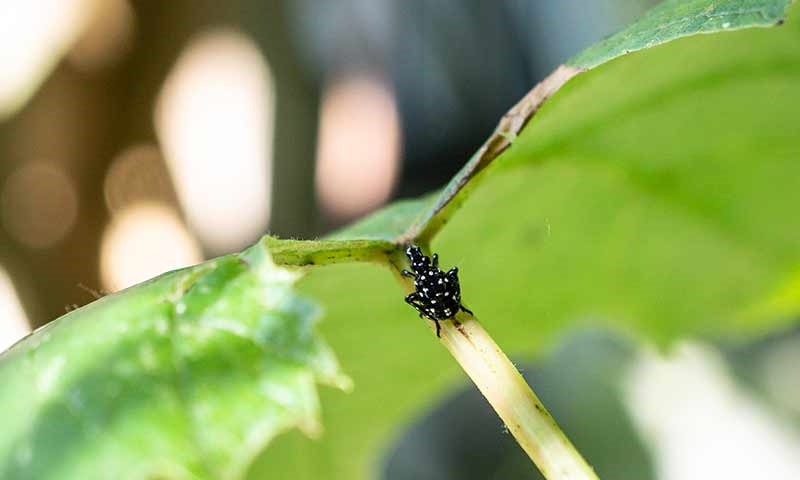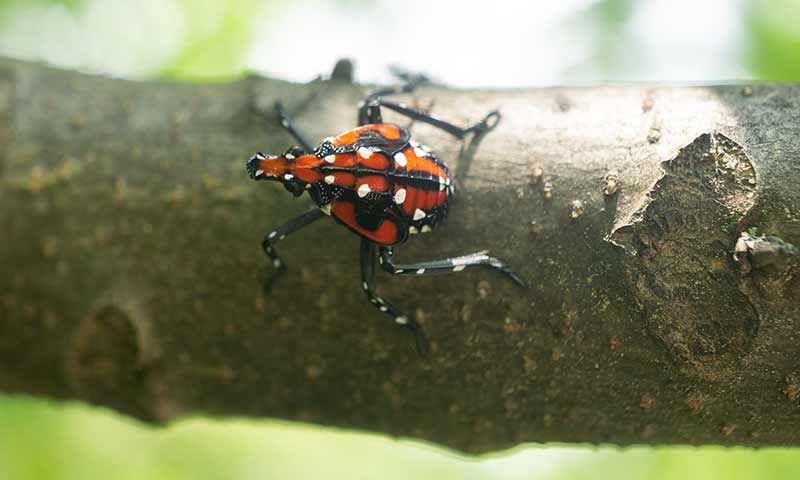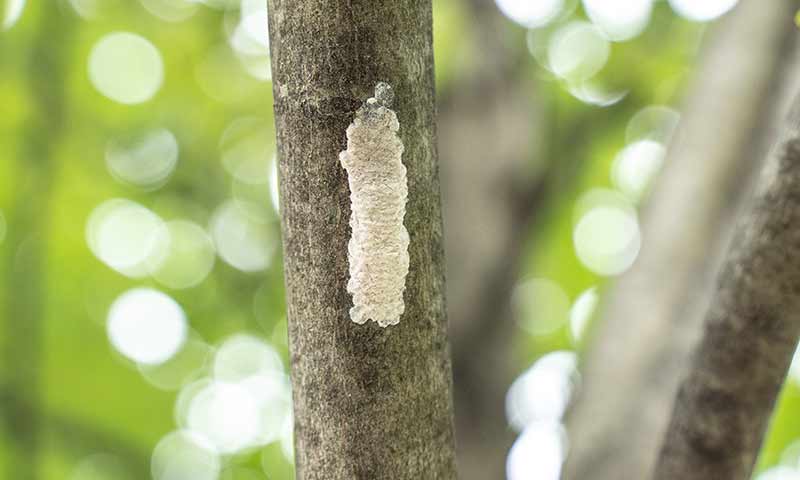How to Kill and Prevent Spotted Lanternfly
At first glance, spotted lanternflies may look harmless and even pretty. But this pest is potentially one of the most destructive invasive insects to ever reach the United States. How it got here, no one is precisely sure. But some entomologists think this Southeast Asian plant hopper snuck into the country in 2012 as egg masses on imported stones.1
Following its 2014 discovery in Berks County, Pennsylvania, the spotted lanternfly's U.S. range expanded into neighboring Northeastern states. But, even then, scientists warned that spotted lanternfly's potential range, if left unchecked, could encompass most of the eastern United States and the Midwest, as well as the Pacific coast.2
Five years after its discovery, spotted lanternflies were found in just four states, including Pennsylvania.2 By the end of 2024, spotted lanternflies had reached 18 states — and threatened to expand their range even more.
- Understanding and Identifying Spotted Lanternfly Life Stages
- Monitoring and Recognizing Spotted Lanternfly Damage
- Preventing and Controlling Spotted Lanternflies
Understanding and Identifying Spotted Lanternfly Life Stages
As spotted lanternfly move into new areas, scientists are still learning how this pest's lifecycle plays out in different North American regions. In spotted lanternfly's current U.S. distribution, these pests consist of one generation per year.
The pests overwinter only in the egg stage. In spring, baby spotted lanternflies hatch as nymphs, then pass through four stages or "instars" before becoming adults. They molt and grow bigger and more destructive at each stage.3 Immature and mature spotted lanternfly stages are very distinctive:

Early- or black-stage spotted lanternfly nymphs make up the first three instars. Sometimes mistaken for ticks, the nymphs start hatching in mid-spring and mature into midsummer. Their wingless black bodies and legs have bright white spots. Third-instar nymphs grow up to 1/4-inch long.

Late- or red-stage spotted lanternfly nymphs, seen from early summer into mid-fall, are the final instar before adulthood. Shaped like early nymphs, their bodies are black with brilliant red patches and bright white spots. They grow up to 3/4-inch long.

Adult spotted lanternflies, often mistaken for moths, measure approximately 1 inch long. They're seen from midsummer until they die with fall's first killing freeze. Their pinkish-tan, black-spotted forewings are tipped with a black, brick-like pattern. Hindwings, usually hidden, are black-and-white with black-spotted patches of bright red.

Spotted lanternfly egg masses start appearing in late summer and early fall. Fresh masses measure about 1 inch long and look like waxy putty. Older egg masses look like patches of dried mud. Underneath the surface, egg masses hold four to seven columns of up to 60 seed-like eggs.4
Monitoring and Recognizing Spotted Lanternfly Damage
Spotted lanternflies damage plants during all stages of their lives, from wingless first instars to winged adults. Their piercing-sucking mouthparts penetrate plant tissues, then suck vital sap from the plant.
The beak-like mouthparts of black-stage nymphs can't pierce woody tissue, so they concentrate on new plant growth, such as tender stems and leaves. Red-stage nymphs and adults can penetrate tree bark.
As spotted lanternflies move into new areas, the list of plants they feed on continues to expand. These pests are known to feed on more than 100 plants in the United States.
Their preferred host is the Tree of Heaven, known by the botanical name Ailanthus altissima. This invasive Asian tree is found in nearly every U.S. state. Other hosts include grapevines, black walnuts, hops, maples, apples, blueberries, lilacs, birch and stone fruits such as peaches.4
These destructive pests congregate to feed in large swarms as evening approaches. With up to 400 adults feeding on a single grapevine,5 the hordes can't be missed. Because spotted lanternflies feed in such large groups, sap loss for their plant targets is significant. Weakened plants suffer stunted growth, low productivity, less winter hardiness and even death.
In addition to directly harming plants, spotted lanternfly infestations significantly damage quality of life for people and animals nearby. As these pests feed, they excrete large quantities of honeydew. This sticky excrement attracts yellow jackets, ants and other insect pests, then it develops sooty black mold. In hard-hit residential areas, outdoor surfaces like sidewalks, patios and lawn furniture can drip with honeydew.
Preventing and Controlling Spotted Lanternflies
In Asia, spotted lanternflies have natural enemies, like birds and other insects, that keep their population in check. Those natural Asian predators don't exist in the United States. That means it's up to humans to intervene to control these invasive insects and their spread.
If you discover spotted lanternflies on your property, take photographs of the pest, kill it, and report the sighting to your local extension office or your state Department of Agriculture right away.
Destroying egg masses to prevent a new generation is an important line of defense. Spotted lanternflies lay eggs on nearly any hard surface, and they hitchhike to new areas as humans move about.
Tree trunks, building walls, lawn chairs, landscape rock and vehicles are all potential egg-laying sites, so inspect your property for egg masses regularly. If found, scrape the mass from the surface and destroy the eggs.
To get rid of spotted lanternfly nymphs and adults, target all stages with Sevin Insect Killer Concentrate or Sevin Insect Killer Ready To Spray.
These highly effective products kill spotted lanternflies by contact and provide residual protection that keeps killing new spotted lanternflies — and more than 500 other listed pests — for up to three months*. The non-staining formulas can treat home foundations up to a height of 3 feet, as well as trees, shrubs, flowers, vegetable gardens and fruits.
Early-stage nymphs are known to move up and down tree trunks throughout the day. Treating tree trunks helps ensure you reach your target. Once nymphs reach adulthood, they mate and begin laying eggs as fall moves in. Kill new adults before they can reproduce, and you'll help prevent damage next year.4
By doing your part to kill and prevent spotted lanternflies, you can help limit their damage and stop their spread. GardenTech and Sevin brands are here to help you protect your landscape and home against spotted lanternflies and other destructive insect pests.
* except fire ants, fleas, ticks and mosquitoes
Always read product labels and follow the instructions carefully, including guidelines for pre-harvest intervals on edible crops.
Resources:
1. New York State Integrated Pest Management Program, "Spotted Lanternfly Reported Distribution Map," Cornell University.
2. K. Kaplan, "Scientists Release First Map of Areas Suitable for Spotted Lanternfly's Establishment in U.S. and World," U.S. Department of Agriculture Agricultural Research Service.
3. A. Nielsen and G. Hamilton, "Spotted Lanternfly," Rutgers New Jersey Agricultural Experiment Station.
4. New York State Integrated Pest Management Program, "Spotted Lanternfly Biology and Lifecycle," Cornell University.
5. New York State Integrated Pest Management Program, "Spotted Lanternfly Damage," Cornell University.
Get Monthly Gardening Advice!




